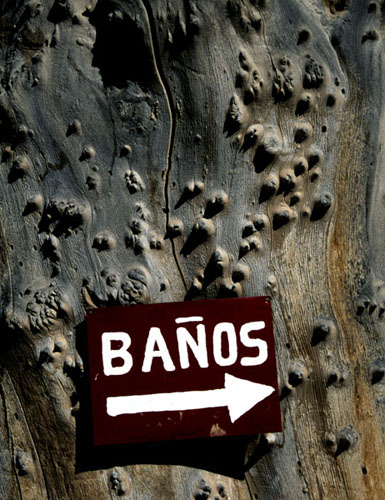
The way to go...
Disrepair

The way to go...
Disrepair
As the Gringo heads to the far north west of Argentina, he meets cyclists, Argentinean cyclists, that is. A wonderful place for it too, at least in tolerable winter temperatures. But maintenance is not in their blood.
Stone
From the low-lying cane-fields of Tucumán, where air-plants coat the telegraph wires, I climb all day through rain and dripping cloud-forest to the cold grasslands above. Tafí del Valle has a quasi-Celtic echo, tales of little people, and ancient standing stones insensitively moved into a tourist park by ignorant authority.
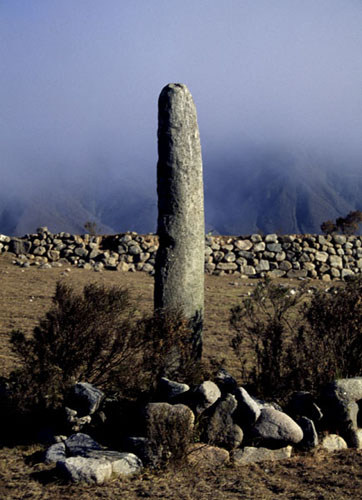
Standing stone at Tafí
Hell
A climb through melting snow takes me to the 3000m pass of El Infiernillo, Little Hell. A couple of children stand on the top, hoping for something from the passers-by, with a fluffy baby llama as bait. I give them oranges.
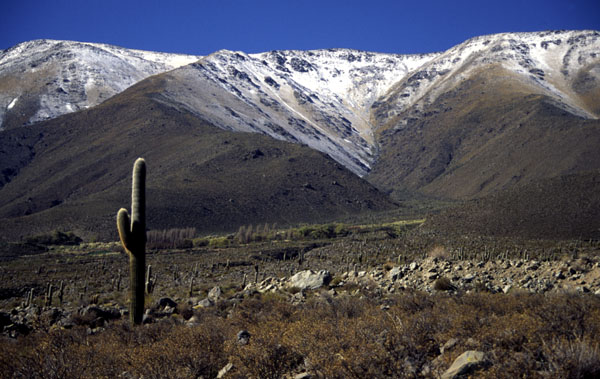
On the edge
Edge
This is the narrow edge. Here ends forest and grass. The other side is cactus and thorn-bush. I descend rapidly into weird Amaichá, a village where cloud rarely dares trespass. A short distance away it has rained all week, but here they claim 360 sunny days a year. The extinct Quilmes people of this valley held out against the Spanish for centuries. Finally they were transported to Buenos Aires, where they vanished into the shanties and left no trace, except for the name of Argentina’s favourite beer.
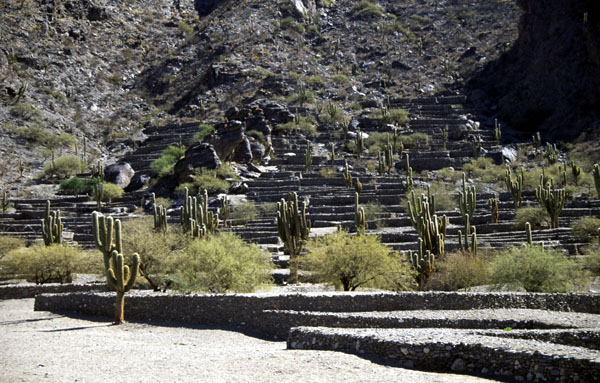
Quilmes
Lard
Friendly Señora Lucila de Albarracín takes me in at her unsigned lodgings. Tea, cakes and conversation are included in the modest price. But I find it hard to stomach the local taste for bread with chicharrones, small brown lumps separated from home-made lard. The cakes contain lard too. They soon become rancid in my panniers.
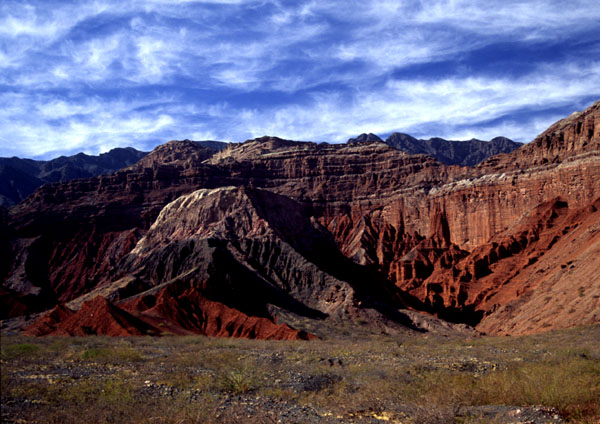
Quebrada de Cafayate
Vice
For several days I follow the valley down. I enjoy the high-altitude wines of Cafayate and the colours of its canyon. Camping the night on the sports field of La Viña, the leather-jacketed council leader, working late in his shack-for-an-office beside my tent, takes an interest in my travels. “So you were in Puerto Natales too? Great place!” he says. “The whores had bodies like film-stars!” He indicates that ladies of the night are available in this small village. Would I like an introduction? “Each to his own,” he mutters, not understanding how any red-blooded man would refuse.

Tobacco
Hospitality
Fields of tobacco and maize signal a more hospitable landscape as I
approach the glorious colonial city of Salta. I rest up for a week,
playing cards, eating good food, and enjoying live folk music. I
ride on through misty cloud-forest, past coca-chewing workmen, to tatty
San Salvador de Jujuy. A journalist spots me, and I record a radio
interview. I find lodgings with the cycling Torrejón family.
Hospitality offers itself in all corners of this depressed city.
Local cyclists invite me to a barbecue, and I return late and drunk.
Unable to operate the stiff lock, I climb a three metre gate hauling my
bicycle over into the narrow passage on the other side. My reputation
is made. A bike shop fixes my broken spokes and slipping gears, and
I buy some spare parts in anticipation of the dearth ahead.
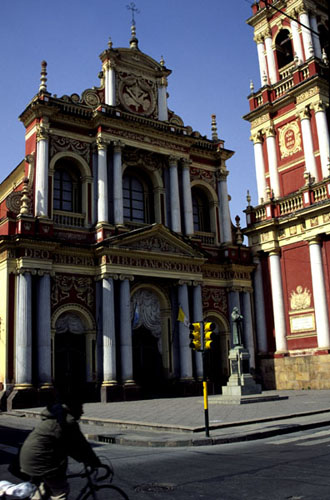
Salta
Colour
I start climbing the desert valley of the Quebrada de Humahuaca, which
over several days will take me to the altiplano and the Bolivian border.
I need to climb slowly to acclimatise. There is no hurry, as I visit
churches and prehistoric fortresses, enjoy cacti and strange rocks.
The sense of Andean culture becomes ever stronger. And the colours
of the desert almost oppress.
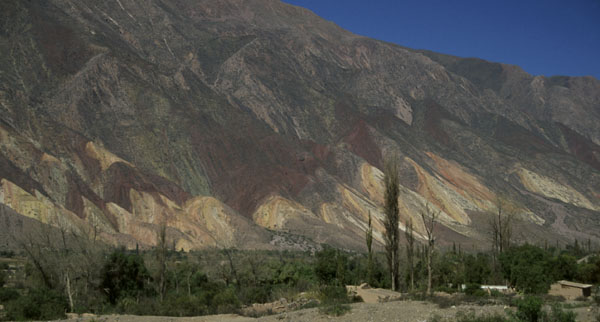
Quebrada de Humahauca
Soul
Arriving in Humahuaca, at 2,900m, with its cobbled streets and colourful murals, I ride a short way with some children, and I fix up their bicycles as best I can. I decline to stay at Huayra Huasi, the House of the Wind, where anarchist plumber Raúl, batty and toothless, provides free accommodation to passing travellers, if they can tolerate his carefully cultivated mediaeval conditions. He gives free entertainment when you supply the alcohol. I detour into the hills, where huge areas covered in Inca period stone-works, curiously reminiscent of Derbyshire moors, save for the cactus and clear, indigo sky. An Andean lady complains loudly at my attempt to photograph not her, but the landscape. The photograph steals the soul, even of the land itself.
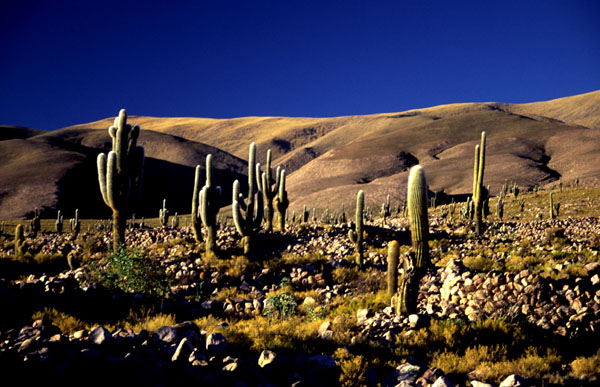
Inca walls
Repair
As I climb ever higher, the land becomes dry and bleak, and the sun beats down through the thin air. The few isolated farmsteads appear to have an impossible life. At the top of a rough pass, at 3,700m, I overtake a small child pushing his bike, and I mend his puncture. Where has he come from? Where is he going? He doesn’t speak. He just stares at the apparition who fixed his bike. Finally I pass through a gap in the hills and arrive on a yellow, grassy plain. Strange shaped hills and ridges stick out like islands in a sea. I am on the famed altiplano, expecting llamas to appear around every corner.
Cold
I cannot credit the miserable poverty of Abra Pampa, a drab featureless mud-brick town on a high featureless plain. This is Argentina, the wealthiest country in South America. How can Bolivia be poorer? Outside in the dark of night, temperatures plummet to well below zero, and a few shivering street-vendors follow Andean trade practices to an Argentinean timetable.
Flamingo
I meet the warden of the Laguna de Pozuelos reserve, a salt lake a day’s ride off the main road. He offers to put me up for the night at the warden’s lodge. I climb over a range of hills, which at 3,900m breaks my altitude record yet again. The thinness of the air forces me to walk on gentle slopes. The rainfall has been poor. The lake is shrinking and the flamingo chicks are dying.
Llama
Around the lake I see llama herds for the first time. They look quizzical as they watch me pass, then suddenly run away with an unlikely gait. The thatched mud-huts of the herders show the continuance of a way of life as old as history. The warden doesn’t turn up. I need water, but the well-bucket is in his locked lodge. I find wine-bottles in the rubbish, and lower them into the well on string. I cook by bright moonlight. The night is the coldest yet, and my water-bottles freeze solid inside the tent.
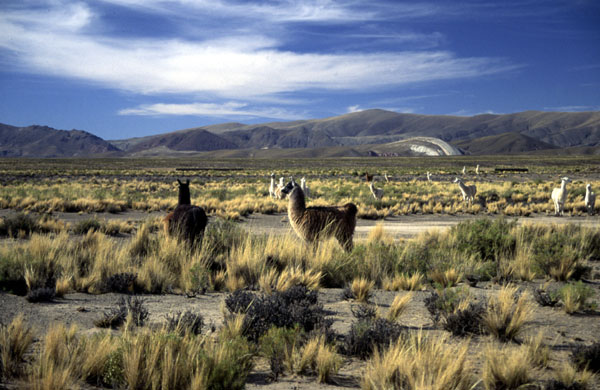
Armadillo
I am charmed by the mud-brick churches of altiplano settlements. An armadillo scuttles across the road. I meet an old man on a Chinese mountain-bike, and show him how to tighten his bottom bracket without special tools. He tells me he got the bike in Villazón, the Bolivian border-town. Goods are first smuggled into Bolivia, sold tax free, and then smuggled back the way they came. Plenty of bikes there. Good, I think. I have broken more spokes, and wisely I decide I will buy a fistful of spares as insurance against future problems.
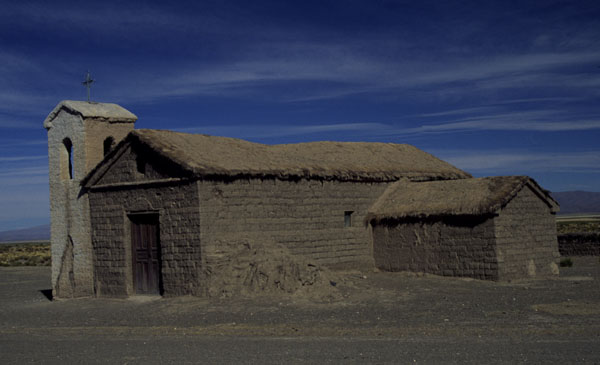
Condor
A pair of condors land close to the road. I meet a cycling teenager with a fractured block, ball bearings spilling out. I can’t help. Even though he can only push and freewheel on the undulating gravel road, such is his advantage of acclimatisation he beats me into town. Once again, I am spotted by journalists, and I record an interview for local television.
La Quiaca is the last town in Argentina. It faces Villazón across a dried up stream-bed. The streets are empty and many shops are boarded up. The railway is abandoned. The only reason to stay is the last chance to eat Argentinean meat and drink Argentinean wine. It seems La Quiaca cannot survive in the face of the low Bolivian prices a few minutes walk away. There is a continuous human train, taking things back and forward across the bridge.
Realisation
Finally I screw up the courage to cross the border from the richest to the poorest country on the continent. Suddenly there is noise and bustle in the street; the shops are full of goods; the market has fresh food; the railway still runs; and even the unpaved road is better than I have left behind. I suddenly realise that in Argentina the rich are richer, but the poor are just as poor. In Bolivia poverty is the norm. So the people are less aware of it, and less oppressed by it. Most are rural peasants with their own land and their own animals, their destiny in their own hands. Somehow here the poor are richer.
Ivan Viehoff, August 2001
